While many of you were off surfing and lounging on some sandy beach or trying to figure out how to balance work with sky-high summer temperatures, I've been talking to all the companies that make augmented reality what it is today.
My best opportunity came during the recent AWE conference in Silicon Valley in June. From tiny startups that traveled from Asia to major players who have been working on AR for years, these companies all converged on one site to attend the largest gathering of AR experts the world has ever seen.
Framed by discussion panels, product presentations, and a massive demo floor to show off the latest in AR hardware and software, this was really one big AR think tank. This is where the AR trends for the next 12 months were being revealed, in some cases, inadvertently, and in others, quite deliberately.
So what did all mean? After gathering all the greatest minds in AR together in one place for several days of insider chatter, rumor, and speculation mixed with very real products, what have we learned? A lot, actually. Let's take a look…
Apple vs. Everyone Else
As thousands of attendees gathered in Santa Clara to talk, listen, and share the latest in AR, there was a distinct lack of discussion about the biggest AR platform on the planet: Apple's ARKit-powered iOS.
Sure, there were a few apps on offer that used iOS, like Indonesia-based Octagon Studio's AR flashcards for learning (paleontology, planetary science, anatomy, etc.), Seattle-based Dance Reality (Andy Albani's ARKit app that teaches you how to dance), and LA's Living Popups, which produces an ongoing animated AR show you can watch by pointing your smartphone's camera at the conference badge.

But beyond the errant app here and there, there was almost no discussion of smartphone-based AR, and certainly no discussion of Apple's swift dominance of the mobile AR space. With Apple's annual WWDC conference coming just days after AWE a few miles away in nearby San Jose, the silence regarding Apple was deafening. Was it envy? Forgetfulness while mired in a sea of alternative AR options?
Perhaps those were factors, for some. But I think it was something else. Similar to the reaction from the tech industry years ago to Apple's decision to pull itself out of the now-defunct Macworld Expo and add height to its walled garden software ecosystem, I think the rest of the AR industry has decided that it doesn't need to play by Apple's rules — pleading, hat in hand, for some space on the iPhone and iPad. No, this is an entirely new space, fueled by an incredibly diverse array of hardware and software solutions, all vying for mindshare as AR inexorably makes its way into the mainstream.
When seen from that vantage point, it's obvious why there wasn't much discussion of Apple's extremely aggressive moves to capture the AR space. The AR industry is too busy creating itself to be overly concerned with Apple's AR aspirations. Frankly, I love this attitude. It demonstrates just how unformed and full of possibility the AR industry is in 2018. And with that attitude will likely come products and experiences we haven't even imagined we'd ever see.

However, there is a danger in all this non-Apple laser focus: Apple winter is coming. The rumors about Apple working on a pair of AR glasses may sound like pie in the sky right now as Apple is busy fending off smartphone rivals from Asia on a daily basis. But remember what the smartwatch space looked like back when the Apple Watch was just a rumor? Save for products like the Fitbit, most wearable devices were considered fringe items in a scattered category. Then, in very short order, it seemed like everyone, from the weather person on TV to the local barista, was suddenly wearing an Apple Watch.
In 2018, it's easy to believe that this was a natural progression, but I can very clearly remember all the doubters back in 2014 who dismissed the rumor and later, in 2015, argued passionately that the Apple Watch was just a niche device that would rank as Apple's first major failure since the passing of Steve Jobs. Today, the Apple Watch is a hit. So while everyone is focused on their AR knitting, they'd also do well to keep one eye well trained on what Apple is doing in AR, because it could change everything, sooner than we all think.
The Augmented Elephant in the Room
So yeah, Apple was out of sight and, mostly, out of mind. But if you're familiar with the history of Apple's relationship to the rest of the tech industry, this shouldn't come as much of a surprise. But what was a surprise during AWE was the fact that the most hyped augmented reality brand ever, Magic Leap, was completely invisible during the conference.
No booth, no presentation, no company hype. Perhaps Magic Leap CEO Rony Abovitz is taking yet another page from Apple's playbook, opting for the mystery of scarcity as a way to stoke excitement as the company prepares to finally release its Magic Leap One headset later this year.

And just to highlight how odd Magic Leap's absence was, I'll note some of the AR luminaries who were there: Unity's Tony Parisi (who I got to chat with about the explosive growth of the industry), Meta's Joe Mikhail, Ajay Singh, director of Samsung NEXT, Brian Mullins, founder of DAQRI, Yelena Rachitsky from Oculus, Lance Anderson of Vuzix, Hugo Swart from Qualcomm Technologies, Michael Yang from Comcast Ventures, Phil Keslin of Niantic, as well as many others including executives from Microsoft, Warner Bros., Amazon, Time Inc., Bloomberg, Verizon, IBM, and HTC.
I think you get the idea. It was the place to be for anyone invested in AR (even if you call your brand of AR "mixed reality" or "spatial computing").
And along with the absence of any physical presence, like Apple, there seemed to be very little talk of Magic Leap at all. I thought about this for a long time and, at this point, I get the sense that people are just plain tired of Magic Leap's mystery and secrecy act. It was cute for the first few years, but now, as many companies have shipped the second and third iterations of their cutting-edge AR products, the tales of wonder and awe from people who have sampled the Magic Leap One have begun to ring hollow for many insiders.
It looks like Magic Leap has used up all of its "magic dust" and the benefit of the doubt given by onlookers, and now the industry is just waiting for the company to deliver on its lofty promises. Inevitably, there will likely be some disappointment if the device is just slightly better than the HoloLens.
But if it does live up to the hype, and surpasses the HoloLens and others in a major way, we all win. We'll know a little more next week when Magic Leap gives us (via its monthly Twitch show) what may be the first live, public demo of the software working on the headset.
AR Gets Down to Business
People keep asking me if I saw any trend lines at the AWE conference and, after much thought, I think there was only one real trend to be found amid all the chaos of hundreds of new companies rushing into a new industry: enterprise AR over consumer AR.
Currently, Apple and Google developers on ARKit and ARCore are creating fantastic and fun mobile AR experiences, keeping us engaged until we have Spectacles-style AR glasses that do more than just shoot video. But most of the industry is focused on more practical matters. From automobile navigation assist software, to manufacturing training guides, to product prototyping, most of the people I met at the conference are targeting AR in big business situations.

In fact, it was fairly difficult to find much of anything in the way of truly consumer-friendly AR solutions at the conference. Companies I spoke to including ODG, Re'Flekt, DAQRI, Vuzix, Kopin, Atheer, and others were mostly locked in on harnessing AR on the factory floor and in production and training environments. But I view this as a good thing. All the focus on enterprise AR may not sound very exciting, but normalizing AR in business is about as good a way to kickstart AR's mainstreaming as anything.
Of course, what this also means is that the pioneering work many these of companies are engaged in within the enterprise world will go largely unnoticed by the general public (unless you visit Next Reality!), only to be later highlighted as innovations in consumer-facing products and platforms via other, more retail-friendly brands.

Aside from the overall heavy business focus, one other subtle trend line did emerge from an unlikely source: DreamWorld and its DreamGlass AR headset. As I mentioned a couple of weeks ago, I got to meet the company's CEO, Kevin Zhong, and tried out the headset while it was attached to a standard Android smartphone.
- Don't Miss: Hands-On: Kopin's Golden-i Infinity Is What Google Glass Was Supposed to Be, But Comes at a Cheaper Price
What struck me was that, while the system has just "decent" imagery and field of view, and the hand tracking wasn't perfect, it was all "good enough." Not only did the DreamGlass "just work," it also presented the light form factor and smartphone connectively that could easily make it a winning solution for both enterprise customs and individual consumers.
It's unclear whether DreamWorld has the resources to become the standard bearer of this particular AR dynamic. But what is clear is that, until we have standalone AR glasses that are indistinguishable from normal shades, DreamGlass, and its "minimum viable product" focused on mobile, offered at the perfect price point of $399, is where the industry should be looking.

In fact, Magic Leap, which delivers an entirely different and (reportedly) much higher quality AR experience, already understands that this is the mobile AR dynamic we need now. But when Magic Leap finally reveals its price, which is likely to be somewhere between $2,000 to $3,000, most of the public probably will probably wait for something cheaper rather than pay a premium for what will be, for many, a pricey experiment.
Alternatively, at $399, DreamGlass (and devices like it), with its easy interoperability with your existing smartphone, is where many people in the mainstream will likely get their first real, non-iPhone AR fix. So no, we don't have slick, tetherless AR smartglasses yet. But we're getting closer, and this looks like the next logical step in the evolution of the immersive mobile computing.
Just updated your iPhone? You'll find new emoji, enhanced security, podcast transcripts, Apple Cash virtual numbers, and other useful features. There are even new additions hidden within Safari. Find out what's new and changed on your iPhone with the iOS 17.4 update.
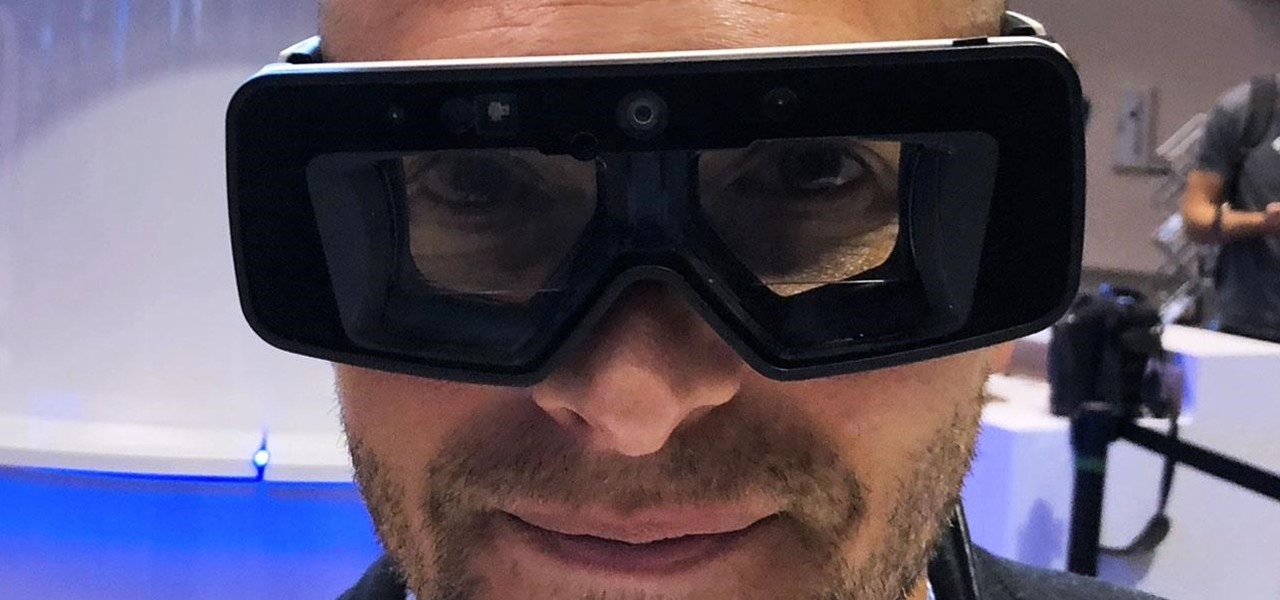


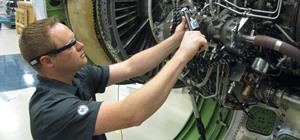





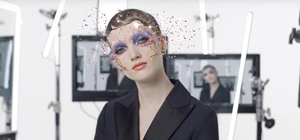


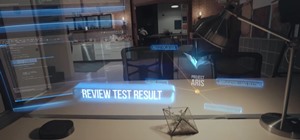





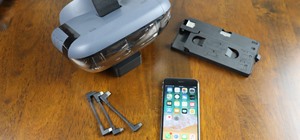



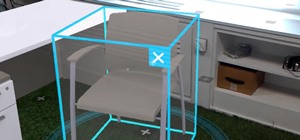

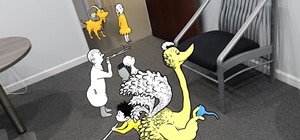
Be the First to Comment
Share Your Thoughts